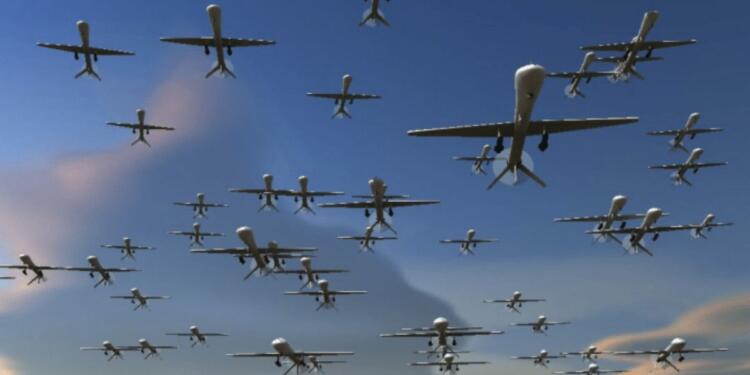The developing automation & technology in the defense sector has given alternate options to weapons of future war. To decrease the human cost of war, the advanced countries are continuously acquiring remote & robotic weapon systems in their defense arsenals. Closely monitoring the warfare pattern of the recent conflicts around the world, India is also eyeing future weapons of war.
Indian Air Force to Indian Aerospace Force
On may 05, 2022, Defence Minister Rajanath Singh addressing the 37th Air Chief Marshal PC Lal Memorial Lecture in Delhi gave insights on the plans of the Indian Defense structure. Exhorting the IAF (Indian Air Force) to become ready for future warfare, he said “if we look at some of the recent conflicts, there are several insights. If we closely watch conflicts in Syria, Iraq, and Afghanistan, and more recently, Ukraine, we will get many points to think about and plan for future wars”.
Giving a reflection on the future warfare domain of IAF, he said “Change is the rule of nature. It also applies to war. We have to think about whether we are ready for the changing warfare. No one can predict when such wars may happen. As students of military and geopolitics, it is our duty to assess what will be the form and shape of future wars. Our adversaries are making military use of space. This has the potential to adversely impact our interests. Therefore, you have to up your game. Should the Indian Air Force move towards becoming the Indian Aerospace Force? The time demands that we ponder over it”.
Raksha Mantri Shri @rajnathsingh delivering the Keynote Address at the 37th Air Chief Marshal PC Lal Memorial Lecture in New Delhi.
Click ▶️ to watch LIVE. https://t.co/6tCVYBnGxE— A. Bharat Bhushan Babu (@SpokespersonMoD) May 5, 2022
Read More: Will Drones and cyberwarfare decide the future of modern warfare?
Remote Weapons of war
The minister’s statement aligns with the changing weapons & battlefield patterns of future war. Wherein the traditional war designs, there was more cost to humans than weapons. But over the years, innovations in weapons & the increasing value of human lives gave an idea of increasing the cost of weapons and decreasing the human cost in warfare which ultimately culminated in the formation of the Air Force. But the human cost was still there and in the search of a fully automatic strike weapon system, military drones were invented.
From logistical support to direct strike capability, military drones are proving to be one of the most effective tools of war. It not only reduces the human cost of war but also provides a greater penetration capacity to the enemy’s territory & gives a strong edge over the opposition’s capacity to inflict a substantial loss.
The US after the 9/11 terrorist attack had launched a “War on Terror” on Islamist countries to avenge the perpetrators of the attack. Taking the benefit of the geography & polity of such countries, terrorists were hiding deep in these country’s territory. Due to the infeasibility of the physical reach of the army or other traditional forces, they were not able to strike them deep. So they decided to use unmanned predator UAVs (Unmanned Aerial Vehicles) for reconnaissance, attack, and logistical support to its defense personnel.
India in weaponizing Drones
The state’s defense giant DRDO (Defense Research Development Organization) and ADE (Aeronautical Development Establishment) are jointly collaborating with future offensive strike capable drones like DRDO Abhyas – a high-speed expendable aerial target (HEAT) and DRDO Ghatak – a stealthy unmanned combat air vehicle (UCAV). Further, the reconnaissance drones like Rustom & TAPAS-BH-201 are also being used by the Indian Armed Forces.
Moreover, the new concept of drone swarm is also being developed for autonomous mass attack capabilities. During an exercise of such capabilities, Air Marshal Anil Chopra (retd) had said “unmanned systems are best for dull, dirty and dangerous missions”. Further explaining the advantages of UAVs, he added, “Reconnaissance for long hours can be dull, exposure to Nuclear-contaminated zones can be dirty and areas with heavy enemy defenses are dangerous”.
Read More: Indian Air Force to acquire 15 HAROP killer drones from Israel
Rajanath Singh’s statement about future war is not limited to any territorial boundaries, it reflects the undefined battlefield & unmarked targets of enemies. Where war will be fought remotely with a faraway distance from targets and striking forces will have the liability of machine cost & liability of human cost will be reduced. Lastly, the future Weapons of war are drones and drones will play a major role in changing the battlefied scenarios.





























